Prep: 30 mins
Cook: 30 mins
Infuse: 72 hrs
Total: 73 hrs
Servings: 16 to 32 servings
Yield: 3 1/2 to 4 cups
Tonic syrup is the flavored sweetener used to make tonic water, and it typically includes quinine derived from cinchona bark. Quinine is responsible for tonic’s dry, semi-bitter taste, but too much can be toxic, and homemade tonic syrup with cinchona can be a dangerous undertaking. This quinine-free tonic syrup recipe offers a safe way to make flavorful tonic water at home. You can enjoy a refreshing glass of tonic water straight or use it for a gin and tonic and other cocktails.
To replicate that signature taste of tonic water, this syrup uses quassia bark. When paired with dandelion root and dried hops, the bitterness of the finished soda mimics that found in tonic water. The botanical bouquet includes lemongrass, citrus peels, allspice, and cardamom, while lavender gives it a nice floral touch. This combination creates a tonic-like syrup with a bright and pleasantly bitter flavor, and every aspect of the recipe can be adapted to your personal taste.
The method is straightforward: You’ll start by boiling the bitter ingredients, then add the other botanicals to make an aromatic water. After a three-day infusion, the strained water is blended with a rich simple syrup and citric acid to produce the tonic syrup. It should be very sweet since you’ll dilute it with plain carbonated water to create tonic water.
Ingredients
For the Aromatic Water:
-
3 cups (681 milliliters) water
-
1/4 ounce (7 grams) quassia bark
-
1 1/2 tablespoons dried hops, optional
-
1 teaspoon (3 grams) dried dandelion root
-
1 tablespoon (2 grams) culinary lavender, optional
-
6 green cardamom pods
-
4 allspice berries
-
2 teaspoons dried lemongrass, rehydrated
-
1/4 teaspoon kosher salt
-
25 grams lemon peel, from 2 to 3 lemons
-
20 grams lime peel, from 2 to 3 limes
-
10 grams orange peel, from 1 small orange
For the Tonic Syrup:
-
3/4 cup (170 milliliters) water
-
1 1/2 cups (297 grams) sugar
-
2 to 3 teaspoons (6 to 9 grams) citric acid, to taste
-
Soda water, for serving
Steps to Make It
Make the Aromatic Water
-
Gather the ingredients.
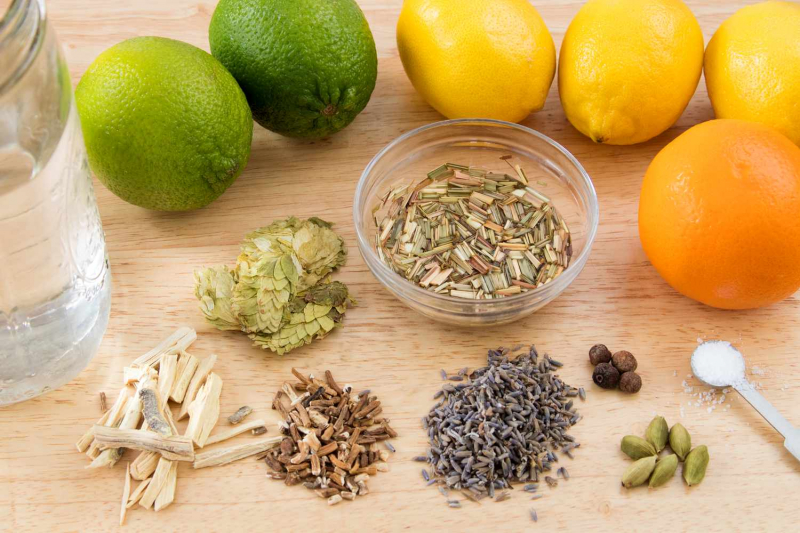
-
In a medium saucepan over medium-high heat, combine 3 cups of water, quassia bark, hops (if using), and dandelion root. Cover and boil for 10 minutes.

-
Reduce the heat to medium-low and add the lavender (if using), cardamom, allspice, rehydrated lemongrass, and salt. Cover and simmer for 20 minutes. Remove from heat and let cool.
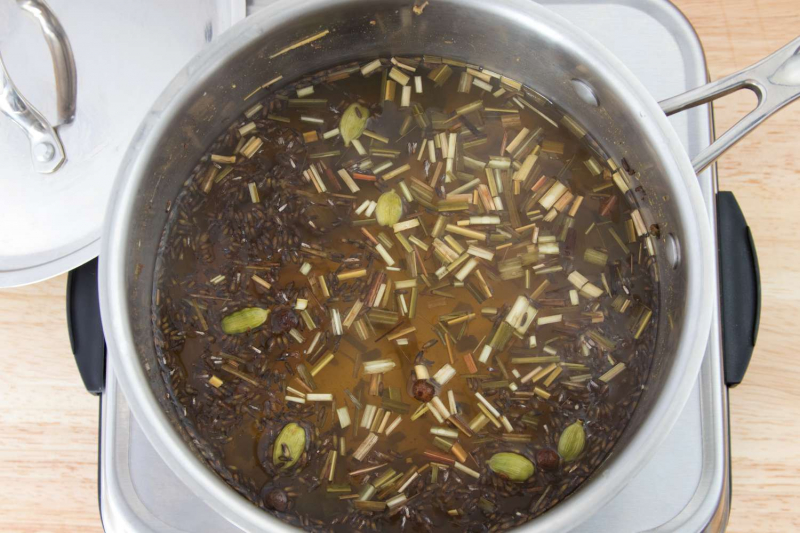
-
Using a vegetable peeler, cut the peel from 2 large or 3 small lemons and limes and 1 small orange.

-
Pour the cool aromatic water into a quart jar and add the citrus peels. Seal, shake, and refrigerate for 3 days, shaking daily.

-
Strain the botanicals from the water using a fine-mesh strainer and two layers of cheesecloth. To remove more particles, filter the water one or two more times through rinsed cheesecloth if desired. This should yield about 2 1/4 cups of aromatic water.

Tips
- The flavoring ingredients are available at stores that sell bulk herbs and spices and are easy to source online.
- Use a kitchen scale to accurately measure the ingredients. This is particularly important as you experiment with your personalized recipe.
- Dried hops and lemongrass are very light and difficult to weigh in these small quantities. The hops don’t have to be extremely accurate; simply pile them into a tablespoon.
- To rehydrate dried lemongrass, cover 2 teaspoons with a little hot water and let soak for 20 minutes. While not necessary because it’s added to water, this brings out more flavor.
- The number of fruits needed depends on the size. Juice the peeled fruits for use in recipes such as homemade sour mix.
- A vegetable peeler is the quickest way to peel this much fruit and avoid the bitter white pith.
Make the Tonic Syrup
-
Gather the ingredients.
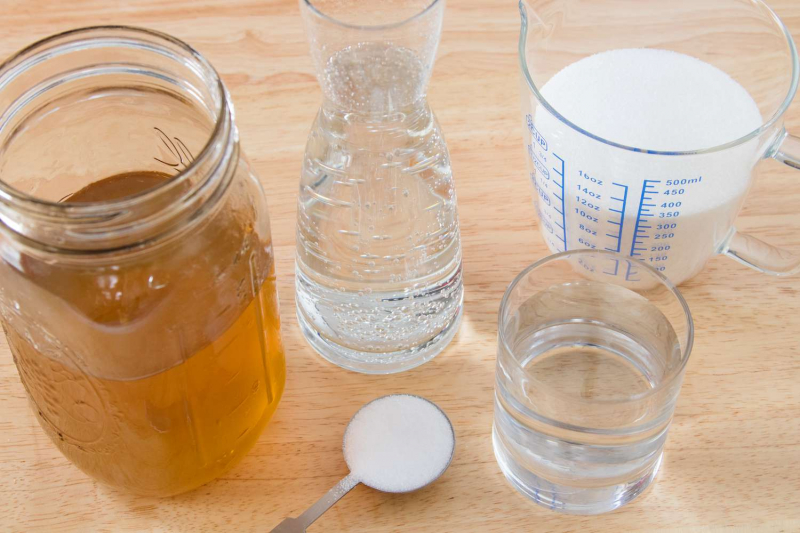
-
In a small saucepan, bring 3/4 cup water to a boil. Add the sugar and stir until completely dissolved. Remove from heat and let the syrup cool completely. This should yield about 1 1/2 cups of rich simple syrup.
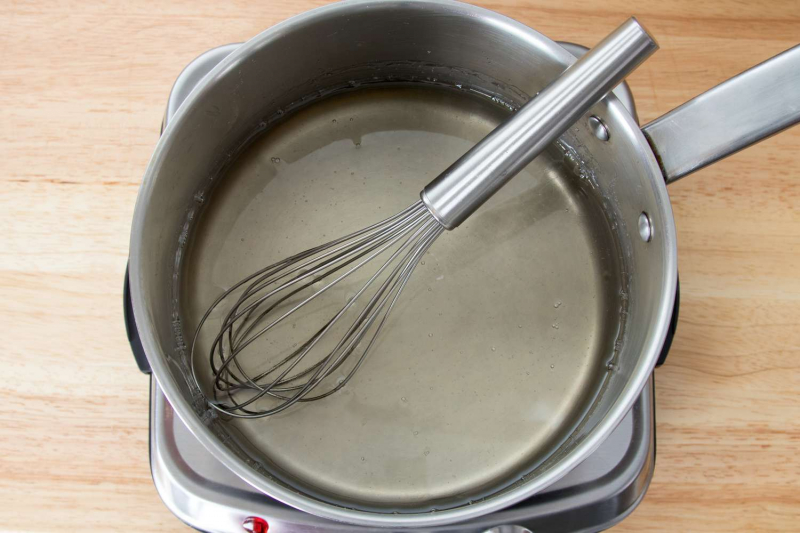
-
Blend the tonic syrup: Add 1 cup of simple syrup and 2 teaspoons of citric acid to the jar of aromatic water and stir well. To test the tonic syrup for taste, pour 1 tablespoon (1/2 ounce) into a small glass and top with about 1/4 cup (2 ounces) of soda water. Add more simple syrup to the jar to sweeten it and more citric acid for extra tartness and a flavor boost. Test with soda water after each addition until it suits your taste.
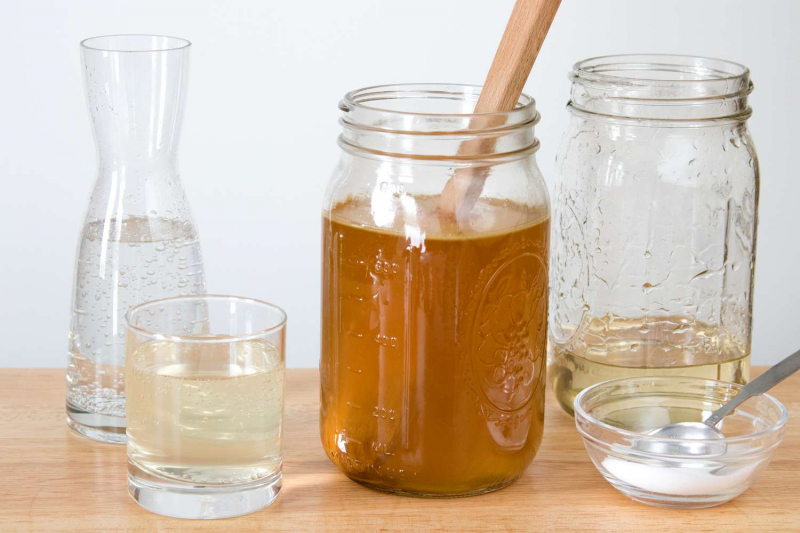
-
Refrigerate the tonic syrup in a sealed jar where it will keep for about 3 weeks. There will be some separation; shake before mixing with soda water and using it in your favorite drinks. Enjoy.
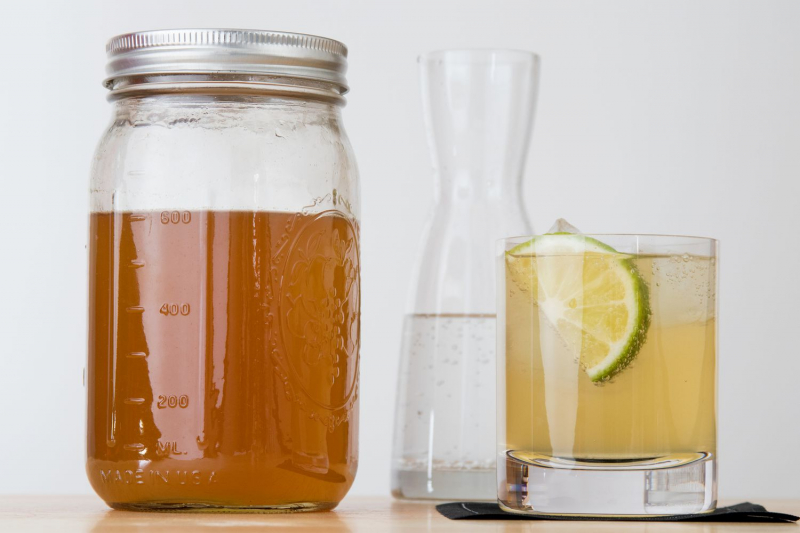
How to Use Tonic Syrup
This quinine-free tonic syrup is safe to drink at any ratio, though best at around 1 part syrup to 3 parts soda. Start with these suggestions and adjust the proportions to taste.
- To make tonic water, mix 2 ounces of tonic syrup and 6 ounces of soda water. Drink over ice with a lime wedge, or use in mixed drinks.
- For drier tonic water, use 1 ounce tonic syrup and 6 ounces soda water.
- To make a gin and tonic, pour 1 to 2 ounces tonic syrup, 2 ounces gin (or other liquor), and 2 to 4 ounces soda water.
Recipe Variations
- Gentian root is a good bittering alternative to quassia bark. It is not as bitter, so increase to 28 grams. It will also soak up more water; increase the boiling water to 3 1/2 or 4 cups.
- Add the juice of one large lemon to boost the citrus and make a bitter lemon soda.
- As an alternative to citric acid, add the juice of 2 lemons (about 1/3 cup) and 2 limes (about 1/4 cup) to the infusing water. Citric acid acts as a preservative, and using citrus juices alone may decrease the syrup’s shelf life by a week or so.
- Use 1 or 2 stalks of fresh lemongrass (cut into large pieces and bruised) to replace the 2 teaspoons of dried lemongrass.
- Other flavoring ingredients you can add to tonic syrup include Ceylon cinnamon, coriander seeds, elderflower, and ginger.
- Regular soda water is unflavored and unsweetened. Club soda typically includes sodium but no sweetener, and that can be used as a substitute without modifying the tonic syrup.
Can Tonic Syrup Be Used in a Soda Maker?
Soda makers vary greatly, and some models may be able to use the homemade tonic syrup. Read the manufacturer’s directions for your machine before trying it; the amount of syrup needed requires experimentation. The best approach for most is to carbonate plain water and keep that tightly sealed and refrigerated. This lets you make each glass of tonic water from scratch and to taste. For instance, you might want the tonic for a vodka tonic a little sweeter and flavorful than one for a whiskey tonic.
| Nutrition Facts | |
|---|---|
| Servings: 16 to 32 | |
| Amount per serving | |
| Calories | 38 |
| % Daily Value* | |
| Total Fat 0g | 0% |
| Saturated Fat 0g | 0% |
| Cholesterol 0mg | 0% |
| Sodium 11mg | 0% |
| Total Carbohydrate 10g | 4% |
| Dietary Fiber 0g | 1% |
| Total Sugars 9g | |
| Protein 0g | |
| Vitamin C 2mg | 12% |
| Calcium 8mg | 1% |
| Iron 0mg | 1% |
| Potassium 7mg | 0% |
| *The % Daily Value (DV) tells you how much a nutrient in a food serving contributes to a daily diet. 2,000 calories a day is used for general nutrition advice. | |
